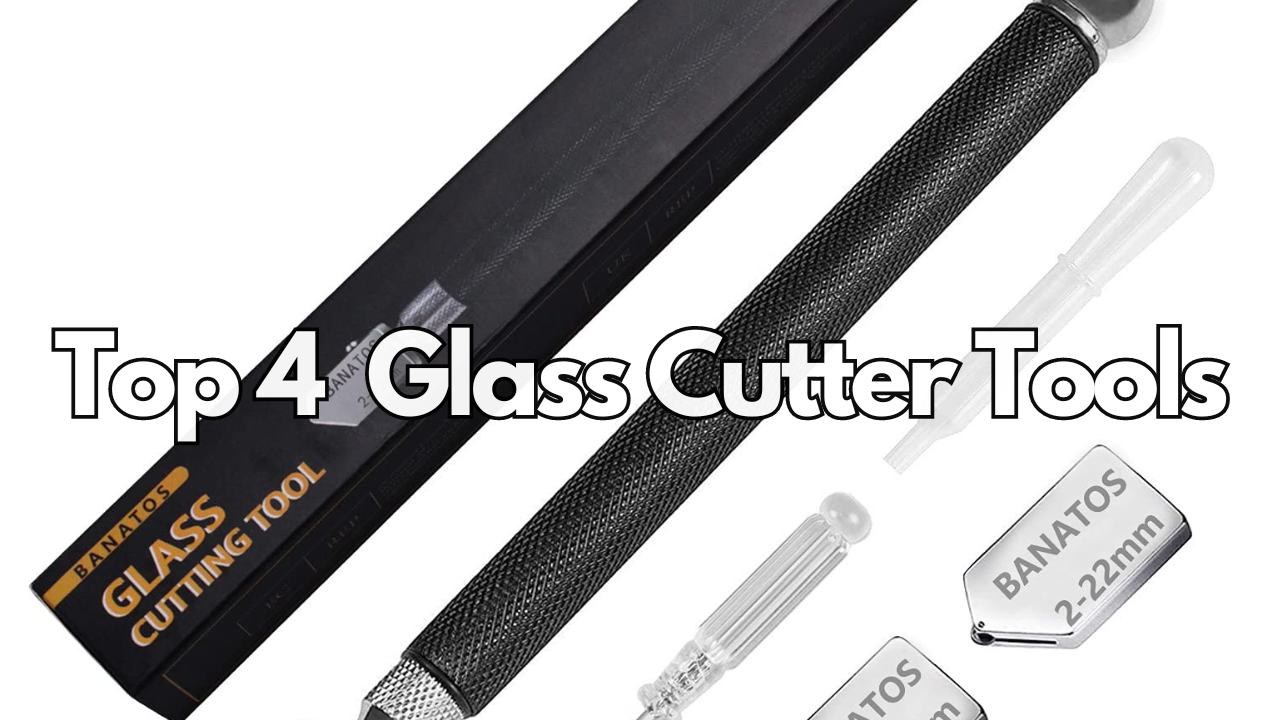Having the right tools can make all the difference in crafting, construction, and DIY projects. Among these essential tools is the glass cutter, a versatile implement that facilitates precise glass cutting for various purposes. Whether you’re a seasoned professional or a novice hobbyist, understanding the intricacies of glass cutter tools can elevate your projects to new heights.
What is a Glass Cutter Tool?
A glass cutter tool is a specialized instrument designed to cut glass with precision and accuracy. It typically consists of a minor, sharp wheel or blade attached to a handle, allowing users to score glass surfaces before breaking them along the desired lines. Glass cutter tools arrive in various designs and configurations to suit numerous applications, ranging from simple handheld models to more advanced automatic cutters used in industrial settings.
How Does a Glass Cutter Tool Work?
At its core, the operation of a glass cutter tool relies on the principle of controlled fracturing. When pressure is applied to the surface of the glass along a scored line, the stress concentrates at the point of the score, causing the glass to break cleanly along that line. The sharp wheel or blade of the glass cutter creates a precise score mark on the glass surface, guiding the subsequent breakage.
Components of a Glass Cutter Tool
To understand the mechanics of a glass cutter tool, let’s break down its key components:
- Cutting Wheel: The cutting wheel is the primary cutting element of the glass cutter tool. Made from long-lasting fabrics such as tungsten carbide or diamond, the wheel creates a shallow score line on the glass surface.
- Material: Tungsten carbide or diamond
- Purpose: Creates a precise score mark on the glass
- Handle: The handle delivers a relaxed grip and control over the cutter tool. It may feature ergonomic designs or anti-slip grips for enhanced usability.
- Design: Ergonomic, anti-slip
- Function: Enables precise control and maneuverability.
- Pressure Mechanism: Glass cutter tools may incorporate various mechanisms for applying pressure to the cutting wheel, such as spring-loaded systems or adjustable screws.
- Types: Spring-loaded, adjustable screw
- Function: Applies consistent pressure for optimal scoring
Types of Glass Cutter Tools
Glass cutter tools come in various types, each tailored to specific applications and user preferences. Understanding the contrasts between these styles can help you select the correct tool for your needs.
Handheld Glass Cutter
Handheld glass cutters are the most common type and are suitable for general-purpose glass-cutting tasks. They feature a simple design with a cutting wheel attached to a handle, offering ease of use and portability.
Oil-fed Glass Cutter
Oil-fed glass cutters incorporate a reservoir that dispenses cutting oil onto the glass surface as the wheel scores the material. This lubrication reduces friction and heat buildup, resulting in smoother cuts and extended tool life.
Pistol-grip Glass Cutter
Pistol-grip glass cutters feature a pistol-shaped handle with a more ergonomic grip than traditional straight handles. This design reduces hand fatigue during prolonged use and offers improved control over the cutting process.
Automatic Glass Cutter
Automatic glass cutters are powered tools that automate the cutting process, making them ideal for high-volume production environments. These cutters utilize motors and computerized controls to achieve precise cuts with minimal manual effort.
Choosing the Right Glass Cutter Tool
Selecting the appropriate glass cutter tool depends on several factors, including the type of glass being cut, the complexity of the project, and the user’s skill level. Here are some considerations to keep in mind when choosing a glass cutter tool:
- Glass Thickness: Different glass cutter tools are designed to accommodate varying glass thicknesses. Ensure that the tool you select suits the thickness of the glass you’ll be cutting.
- Cutting Wheel Material: The material composition of the cutting wheel affects its durability and performance. Tungsten carbide and diamond wheels are known for their longevity and ability to produce clean cuts.
- Comfort and Ergonomics: If you anticipate long periods of use, prioritize comfort and ergonomics when selecting a glass cutter tool. Look for cushioned grips and adjustable handles to reduce hand strain.
- Specialized Features: Relying on your requirements, you may require additional features such as oil-fed lubrication systems or interchangeable cutting heads. Evaluate these features to determine their relevance to your projects.
Maintenance and Care Tips
Proper care and care are essential for prolonging the lifespan and performance of your glass cutter tool. Follow these tips to keep your tool in optimal condition:
- Clean the Cutting Wheel: Regularly remove debris and glass particles from the cutting wheel to prevent dulling and ensure smooth operation.
- Lubricate Moving Parts: Replenish the cutting oil reservoir for oil-fed glass cutters to maintain proper lubrication.
- Store Properly: Store your glass cutter tool in a dry, secure location to prevent damage and corrosion. Avoid exposure to extreme temperatures or moisture.
- Replace Worn Parts: Inspect your glass cutter tool periodically for signs of wear, such as a dull cutting wheel or loose components. Replace worn parts promptly to maintain cutting accuracy.
Frequently Asked Questions (FAQs)
Can a glass cutter tool cut other materials besides glass?
Yes, some glass cutter tools can cut materials such as ceramic tile and thin metal sheets, depending on their design and cutting wheel material.
How do I know when it’s time to replace the cutting wheel?
It would help if you replaced the cutting wheel when it becomes dull or worn, resulting in uneven or incomplete cuts on the glass surface.
Is safety gear required when using a glass cutter tool?
While safety gear such as gloves and safety glasses is recommended, it may be optional for some applications. However, exercising caution and following proper cutting techniques can minimize the risk of injury.
Can I sharpen the cutting wheel of a glass cutter tool?
Sharpening the cutting wheel of a glass cutter tool is not recommended, as it may alter the wheel’s geometry and compromise cutting performance. It’s best to replace the wheel with a new one when needed.
Are there any techniques for achieving straight cuts with a glass cutter tool?
Use a straightedge or ruler to show the cutting wheel to achieve straight cuts. Apply even pressure and steady the hand motion along the desired cutting line.
Can I use a glass cutter tool on tempered glass?
Using a glass cutter tool on tempered glass is not recommended, as the material is designed to shatter into tiny, safe fragments when cut. Attempting to score tempered glass may result in unpredictable breakage patterns.
What is the difference between a carbide and a diamond cutting wheel?
Carbide cutting wheels are durable and suitable for general-purpose cutting. In contrast, diamond cutting wheels offer superior hardness and longevity, making them ideal for cutting hard or abrasive materials like glass and ceramic.
Can I use a glass cutter tool to cut curves?
While glass cutter tools are primarily designed for straight cuts, gentle curves can be cut by carefully guiding the cutting wheel along the desired path. However, alternative cutting methods may be necessary for tighter curves or intricate shapes.
Are there any safety precautions I should follow when using a glass cutter tool?
It’s essential to wear safety glasses to protect your eyes from flying glass shards and gloves to prevent cuts. Work in a well-ventilated area to minimize exposure to glass dust and fumes.
Can a glass cutter tool be used for stained glass projects?
Yes, glass cutter tools are commonly used in stained glass projects to cut glass pieces to the desired shapes and sizes. However, intricate designs and delicate glasswork may require specialized techniques and tools.







